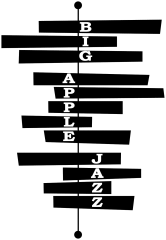New York City, NY
Meet Gordon Polatnick, Article by Jacqueline Bischof – 2008
Meet Gordon Polatnick, Article by Jacqueline Bischof – 2008
“Living the Jazz Life”
by Jacqueline Bischof
Autumn 2008
It’s 11.30 on a Friday night in early Fall, and Dennis Davis is standing outside St. Nick’s pub in Sugar Hill, one of Harlem’s oldest and most famous jazz establishments. Tall and wiry, Davis is wearing a weathered, ankle – length leather coat. Standing under the shadow of the club’s bright fluorescent sign, he thinks about whether or not to join in tonight’s gig. As Davis makes his way to the door he nods his head in greeting to the club’s regulars, and to an unassuming white man standing outside. Gordon Polatnick greets him in return.
Dennis Davis, “The Groovemaster!” Four-time winner of amateur night at the Apollo. Protégée of renowned drummers Max Roach and Elvin Jones. Drummer for Stevie Wonder, David Bowie, John Lennon and Roy Ayers. Acquaintance of “Big Apple Jazz” tour guide, Gordon Polatnick.
Polatnick and Harlem are unlikely bedfellows. But take a closer look and you can understand the fit. This middle-aged Jewish man from Long Island is a jazz devotee who wandered unfocused through life until he found himself as a tour guide to New York’s jazz scene.
His life story resembles jazz performed late at night in a smoky club. At times the music sounds chaotic, and you never know what chord to expect, but the rhythm carries you through, and somehow it all makes sense in the end.
Polatnick is not your typical “see the sights, taste the delights” tour guide. It’s unlikely he’s ever led the same jazz tour twice, or gone to the same places in a row more than a few times. Polatnick’s tours are popular precisely because they’re not generic. Tell him what kind of jazz you like, and he’ll take you to the right places. Tell him you know nothing about jazz, and he’ll take you on a tour that’ll make you feel like an expert.
In his words, Big Apple Jazz is on a mission “to reinvigorate the jazz scene in NYC, by introducing fans to the more authentic and hidden jazz events that occur below the radar of most visitors.”
“He’s an obvious student of jazz,” says Canadian Ray Grover, who was on a tour with Polatnick the night Davis was at St. Nick’s. “Jazz can mean 50 different things to 50 different people. Gordon listened to our tastes and he catered to them.”
Before arriving at St. Nick’s, Polatnick had taken Grover and his wife to see acts at The Shrine, ‘Tazz, Londel’s Supper Club and Lenox Lounge.
Polatnick has been a tour guide on and off since he turned 18 and helped with a tour across Israel for some extra cash. Since then he’s led tours across a dozen countries. He’s done the psychedelic San Francisco neighbourhood of Haight-Ashbury and the tourist sites of Manhattan. He’s driven folks on cross-country tours of America in a small 14-seater van, and he’s “corralled,” in his words, seniors on tours to half of South America.
Before the official tours and the “polyester blue jackets, the striped ties, the khakis and the name badges,” he was forced to wear, there were two things: music and travel.
Polatnick grew up in Long Island and after turning 18 during a gap year in Israel, he returned to the States to study at Tufts University in Boston. He majored in early childhood development but spent most of his time on the university’s radio station. Increasingly frustrated with contemporary radio and the endless play of Top 40 hits, Polatnick found a niche celebrating the best in off-the-wall, undiscovered local and international music.
He found music by travelling. Six months in the early 80s as part of the Semester at Sea program took him to Japan, Taiwan, Hong Kong, China, Indonesia, the Philippines, Sri Lanka, India, Egypt, Israel, Greece, and Spain. He also spent a semester at the University of Ibadan in Nigeria.
In Nigeria, famed Afrobeat musician and would-be presidential candidate Fela Anikulapo Kuti made Polatnick wait outside for an entire day before he agreed to meet with him. Once inside Kuti’s house, Polatnick’s jazz knowledge was immediately tested when Kuti played Dizzy Gillespie’s “A Night in Tunisia” on the piano.
“I got to hang out with him, smoke hemp with him, watch the Jefferson’s with him and his son,” he laughs. Polatnick was inspired by Kuti, despite what he took to be a show of egotism when Kuti walked around the house in his underwear, playing the saxophone while looking at himself in the mirror.
“I realized he was the real deal. He was just himself 24 hours a day,” says Polatnick. “He named names, he walked the talk! His ability to stand up for any and every cause he cared about really inspired me.”
After returning home Polatnick produced several radio shows at Tufts (“No Soap Radio” was the name of one) and finished his degree. Then he hitchhiked to the Montreal Jazz Festival, ran a restaurant for his family in the East Village of Manhattan, worked as a horse and buggy driver in Central Park, moved among five states, ran tours and lived on a houseboat at the notorious Gate 6 in Sausalito.
Eventually, approaching his 40th birthday, he heard a familiar inner voice.
“I wanted to settle down, start a relationship!” he says.
Somewhat reluctantly he bought a home in Inwood at the top of Manhattan (“I was a Village guy … but it was so cheap.”) Coming off the downtown train into Harlem, the world traveller found his musical home. Shortly after moving to Inwood, he met his wife, Jennifer on a tour. Well, kind of.
Jennifer had come from California to visit a friend in New York. While out celebrating the end of her graduate studies one night, the friend introduced her to Polatnick
“We met late one night at the Twin Towers’ Windows on the World lounge,” explains Jennifer. “Then we went out and walked around Wall Street area and the Fulton Fish Market … we had an adventure.”
Polatnick was leading the way, unleashing his inner tour guide for Jennifer and their mutual friend. He carried on wooing Jennifer after she returned to California. They married a few years later.
“I’d never met someone who exuded such enthusiasm and happiness, such a contagious love for New York,” she says.
Jennifer is not the only person that appreciates Polatnick’s love of New York. Harlem residents are happy about the tourists he brings into the neighbourhood, and the authentic jazz education he gives them.
Brandy Nagi, a performer and waitress at Sylvia’s, the famed Harlem soul food restaurant, says the community appreciates the way Polatnick uses his knowledge and love of jazz to give back.
“Gordon’s cool,” she says. “He knows his stuff.”
Harlem resident, private librarian and fellow entrepreneur Kurt Thometz calls Gordon a “jazz devotee,” who is keeping authentic jazz culture “alive against the odds” of commercialism.
It was Polatnick’s passion for music and not commercialism that dealt a death blow to one of his most ambitious projects: his shop and family friendly club, EZ’s Woodshed.
By the time Polatnick married Jennifer in 2003, he had spent eight years running his jazz tour business, and he seemed to have found his rhythm. One month after the birth of their daughter Sophie in 2005, he opened EZ’s on 131st and Adam Clayton Powell Boulevard in Harlem. “The Corner” was the haunt of Louis Armstrong, Duke Ellington, Billie Holiday and Fats Waller; it was near the spot where the ‘Tree of Hope’ grew – a vestige of which is rubbed by Apollo Theater performers for luck before they perform. The shop sold jazz merchandise and offered a space for bands to play from late afternoon into the evening.
But somehow in the improv, a wrong chord was played.
The shop was in Harlem, which many tourists didn’t venture into. It wasn’t on the most commercial strip of the neighborhood either. It didn’t sell alcohol. The tour company that promised Polatnick daily busloads of passengers reneged. In July this year, Polatnick closed the doors of his dream.
“I had a lot of bad ideas here” – he points to his head – “that were good ideas here,” he says, laying a hand on his heart. “New York is a tough place to do business.”
Now Polatnick concentrates on his Big Apple Jazz tours, which are still proving successful. Most of that success is driven by the power of Google: type in “jazz tours New York” and Big Apple Jazz will come up first. The website is packed with facts about jazz in New York, videos and photographs, and even an extensive “encyclopedia” of jazz clubs in New York that Polatnick compiled himself. Polatnick’s customers are mostly tourists that come from all over the globe.
“I could spend every day talking about jazz history and pointing out things that I’ve uncovered,” he says, “like, ‘Did you know Scott Joplin lived there?’ ‘That was Count Basie’s club!’ ‘That’s where the Tree of Hope grew!’ I still get excited.”
As much as he loves the job, Polatnick knows he can’t do this forever. With another baby on the way, he and Jennifer are thinking about moving back to California to be closer to her family. Polatnick will need a new gig. He’s thinking of doing tours of the wine country. [This plan never happened. They are still New Yorkers, just expanding the NY tour repertoire, and visiting CA more often].
“Most people give you a hard time if you say, ‘This is my life plan,’ to live so episodically through all these things,” he remarks. “But it’s the only thing that really made sense to me.”
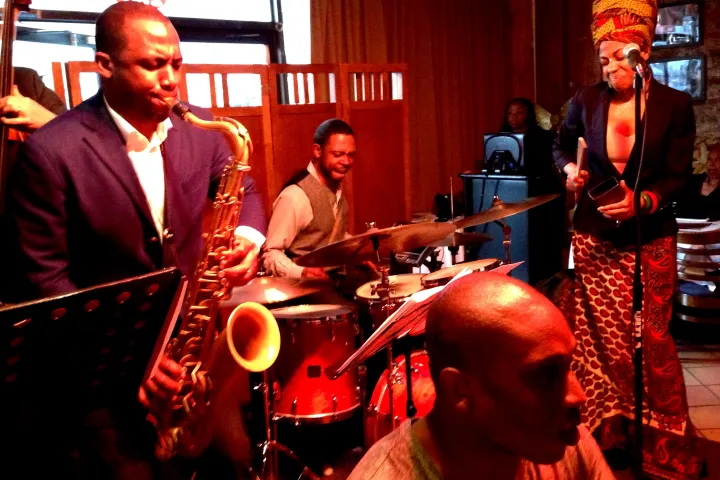
Harlem Juke Joint Tour
Your Harlem jazz tour guide customizes the best itinerary for each given night, based on the most talented players in Harlem’s most exciting jazz clubs.
185 Reviews

Harlem Juke Joint Tour
Your Harlem jazz tour guide customizes the best itinerary for each given night, based on the most talented players in Harlem’s most exciting jazz clubs.
185 Reviews
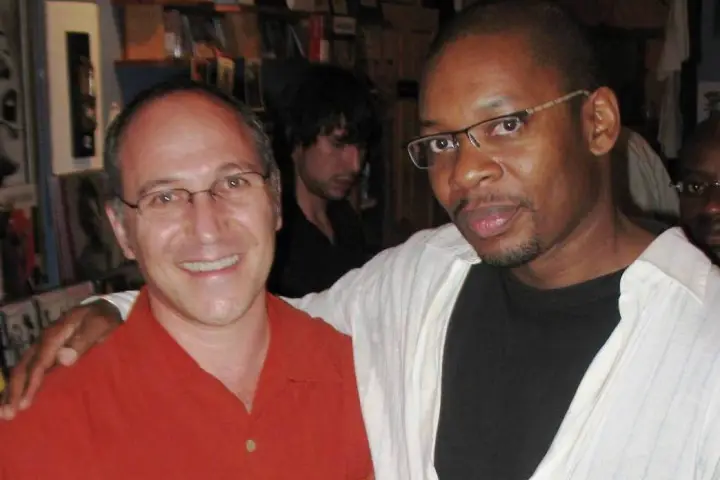
Legends of Jazz Tour
This is our premium tour! It features jazz’s international superstars, and also rising stars who deserve wider recognition.
185 Reviews

Legends of Jazz Tour
This is our premium tour! It features jazz’s international superstars, and also rising stars who deserve wider recognition.
185 Reviews

Greenwich Village Jazz Crawl
Intimate Greenwich Village Jazz Tour to discover and explore two hidden jazz haunts and the sites where Billie Holiday, Charlie Parker, and Bob Dylan made history.
185 Reviews

Greenwich Village Jazz Crawl
Intimate Greenwich Village Jazz Tour to discover and explore two hidden jazz haunts and the sites where Billie Holiday, Charlie Parker, and Bob Dylan made history.
185 Reviews
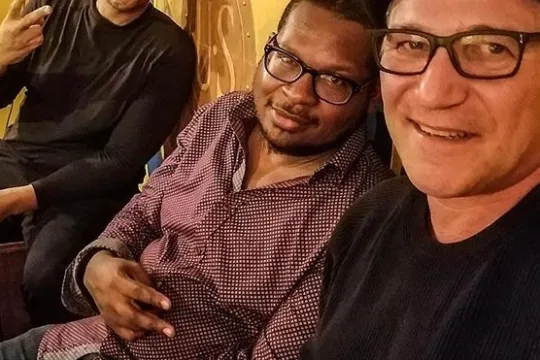
Private Tour
We’ll design your private jazz tour based on your tastes and our extensive knowledge of musicians, clubs and speakeasies throughout the city. We know what is happening nightly on and off-the-beaten-path.
185 Reviews

Private Tour
We’ll design your private jazz tour based on your tastes and our extensive knowledge of musicians, clubs and speakeasies throughout the city. We know what is happening nightly on and off-the-beaten-path.
185 Reviews
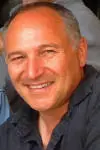
Gordon Polatnick
Gordon is the founder of Big Apple Jazz Tours. What started as a personal challenge to discover and document all of New York’s hundreds of jazz joints and to establish Harlem’s first jazz day club, has now blossomed…
Gordan Patrick Full Bio
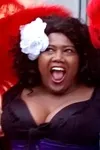
Amanda Humes
There’s no one in New York City like Amanda! Equal parts sass, smarts, and customer service – Amanda is the Harlem resident, Columbia University graduate, and…
Amanda Humes Full Bio
